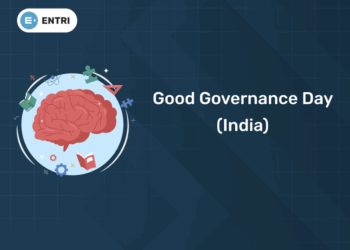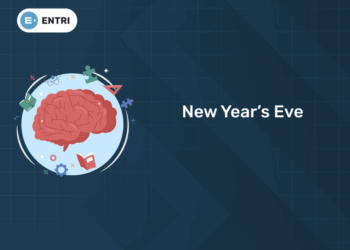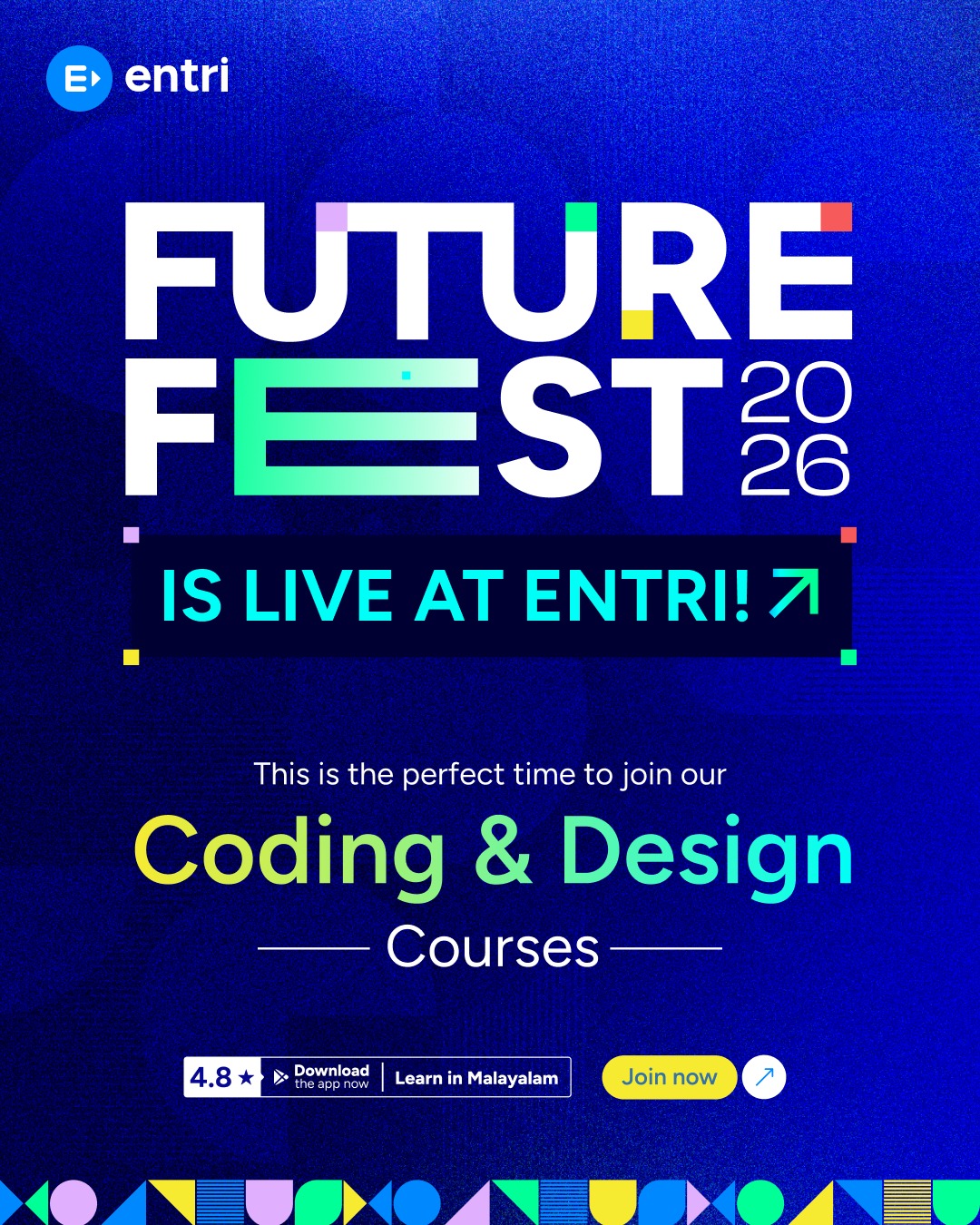Table of Contents
The process of creating websites using both front-end and back-end development protocols is known as “full-stack development.” The increasing number of digital enterprises in recent years has led to a rise in demand for this profession. System engineering and server and database management are combined. The demand for full-stack developers is high everywhere in the world. Here is complete list of modules covered under Entri App’s full-stack development certification course. Making your career future-ready can be achieved by enrolling in Entri’s Full Stack Development course and get full-stack web development Syllabus.
Learn Full Stack Development with expert mentors! Get Free Demo Here!
Introduction
Teams of back-end, front-end, and database specialists have always worked together on sophisticated technologies to produce web and application development processes. However, the current trend is sharply moving in favour of multi-talented individuals, or jacks of all crafts who can fill a variety of tasks. This has led to an increase in demand for Full Stack developers.
What then are the necessary abilities for a full stack developer to succeed? Full stack developers are known for their versatility, therefore it is expected of them to be well knowledgeable about every aspect of web and app development. This covers creating user interfaces, scripting, creating databases, manipulating photos in Photoshop, adding animation, and a host of other essential tasks.
Why Full-stack?
One of the most comprehensive courses offered in India right now is Entri’s Full Stack Development course. The development of the web application’s client-side and server-side components is referred to as full stack development. Individuals possessing comprehensive understanding of this programme can create websites and web applications from both the front end and back end. You can choose the online course that best fits your needs and expectations by looking at the Full Stack Developer Course Fee.
Students enrolled in full stack development courses offered by the Entri platform will receive a plethora of benefits. The platform allows students to select the course in which they are most interested. The platform offers numerous features that facilitate students’ learning about machine learning, as well as various courses that can help them create their own application or land a job at a highly esteemed IT company.
Learn Full Stack Development with expert mentors! Get Free Demo Here!
Full stack web development syllabus
The full stack development course modules at Entri App are created by professionals with years of business expertise and stellar teaching abilities. Entri App encourages a diverse educational experience. Here, students work on mini-projects, one project, and lab sessions where they test codes. All of these activities count towards the credits needed to complete the course.
The full-stack course duration is six months with extra 2 months internship. Every batch is completed in a comparable amount of time. The demands of the learners were taken into consideration when creating the full-stack web development Syllabus.
Module 1: Kick Start Fundamentals
Essentials of Operating Systems, Networks, Web Communication and use some essential developer tools like Command-Line and Git. You’ll learn to version your software with Git and push your code to GitHub.
Introduction to OS & Networks
- Overview of OS Concepts
- Networks & Internet
- Network Layer
- Application Layer
- Web Servers
Working with Command Line
- Files & File System
- Managing System Packages
- Environment Variables
- Network & SSH
Module 2: Static Website Design
This course helps you build a strong foundation in web technologies such as HTML, CSS. With this, you will create and publish simple and beautiful websites from scratch.
Software Development Fundamentals
1. Importance of Frontend
2. Fundamentals
- > Syntax
- > Debugging
- > Tweaking Code
HTML Basics
- Getting Started
- HTML Elements HTML Headings HTML Paragraphs HTML Button
- HTML Attributes
- HTML Images
- HTML Hyperlinks
- HTML Containers
- HTML Lists
- HTML Forms
CSS Basics
1. How to use CSS
2. CSS Selectors
- Class Selector
- Id Selector
- Type Selector
- CSS Specificity
- CSS Inheritance
- CSS Cascading
3. CSS Units
4. CSS Box Model
5. CSS Font style properties
- CSS Margins
- CSS Paddings
- CSS Border
6. CSS Rulesets
7. CSS Properties
8. CSS Colors
9. Background colour & Background Image
10. CSS display classes
- Block
- Inline
Bootstrap Components
1. An overview of Bootstrap
2. How to download and use Typography, Buttons, Forms Carousel
3. Bootstrap buttons
- Form
- Colors
4. Embedding Videos
5. Cards
Module 3: Responsive Website Design
This course helps you build a strong foundation on web technologies such as HTML, CSS, Media Queries, and Flexbox. With this, you can create a responsive web application that runs smoothly across all the devices like desktop, tablet, and mobile.
Intermediate CSS
- Block vs inline elements
- Grid, Flex, etc…
CSS Media Queries
1. Media Query Media Types
2. Media Features
- Width, min-width, max-width
- Height, min-height, max-height > Orientation
3. Combining Multiple Media Features in a single Media Query.
- Logical Operators (and)
- Logical Operators (not)
- Logical Operators (,)
Bootstrap
1. Bootstrap Grid System
- > xContainer
- > Row
- > Column
2. Bootstrap Utilities
- > Display Utilities
- > Flex Utilities
- > Sizing Utilities
- > Spacing Utilities
3. Navbar
4. Buttons
Module 4: Dynamic Web Applications
In this course, you will understand the fundamental concepts in JavaScript and apply them to build dynamic and interactive web projects. You will also learn scope, hoisting, and the fundamentals necessary to use modern frameworks like React, Angular, and Vue. You’ll master key functional methods like map, reduce, and filter plus promises and ES6+ asynchronous JavaScript!
Introduction to JavaScript
- Data Types
- Variables
- Basic Operators
- Conditionals
- Loops
- Functions
- Arrays
- Objects
- Control Flow
- Comments
- Math Functions
DOM Manipulation
- The JavaScript Console
- Introduction to the DOM
- Defining the DOM
- Select and Manipulate
- Important Selector Methods
- Manipulating Style
- Manipulating Text and Content
- Manipulating Attributes
- Local Storage
Forms
- The form element
- The label element
- The input element
- The option element The optgroup element The button element
- The select element
- The textarea element
- Form validations and Input validations
Array Methods
Adding & Removing Elements
- unshift
- splice
- pop
- shift
Finding Elements
- find
- indexOf
Concat
Forms
How to add Event Listeners
Callbacks
Schedulers
- setTimeout
- clearTimeout
- setInterval
- clearlnterval
Hypertext Transfer Protocol (HTTP)
- HTTP Requests using Fetch
- HTTP Responses
- Working with JSON data
Module 5: Intermediate JavaScript
In this course, you will learn the concepts like Events, Scope, Hosting, this, ES6 Classes, Error handling, More about Objects, and how to handle Asynchronous JavaScript.
Rest parameters and spread syntax
- Destructuring Arrays
- Destructuring Objects
More Objects
- Constructor Functions
- Factory Functions
- Constructor Method New Keyword
Prototypes & ES6
- Classes
- Built-in Constructor Functions
- Constructor Property
- Inheritance
- this in classes
String Manipulations
- trim & split Methods
- toUpperCase & toLowerCase Methods
- includes Method
Module6: Intermediate Responsive Web Design
This course will help you to develop a responsive layout using CSS Flexbox and CSS Media Queries.
CSS Layouting
- CSS Flexbox
- > display
- > flex-direction
- > justify–content > align-items > flex-wrap
- > flex-flow
- > align–content
- > align–self
- > flex-grow
- > flex-shrink
- > order
- Sizing Elements
- Over flow
- Box Sizing
- > Content Box
- > Border Box
React JS – Getting Started
In this course, you will learn how to build stateful web applications with the ReactJS library. When you finish this course, you will be comfortable creating an application in ReactJS, from scratch.
Introduction to React JS
- Why React?
- Stateful + Stateless components Hello World
- Introducing JSX
- Rendering Elements
- Components and Props
- State and Lifecycle
- Handling Events
- Conditional Rendering
- Lists and Keys
- Forms
- Composition vs Inheritance
- Thinking In React
CSS in JS
- Styled Components
- Emotion
Routing
- Query parameters
- Path parameters
Module 7: React JS Hooks
In this course, you will learn how to build stateful web applications with the React JS Hooks
Introduction to Hooks
- Introducing Hooks
- useState
- useEffect
- useContext
- Hooks with Local Storage Hooks with React Router
- Data fetching using Hooks
- Writing Custom Hooks
Module 8: Relational & Non Relational Databases
Learn about the incredibly prevalent databases today. Through this course, you’ll develop strong fundamentals and be proficient in concepts related to Databases and DBMS. Most importantly, you’ll also be able to perform powerful queries on databases using SQL.
Relational Databases
- Introduction
- SQL
- Aggregation, Relationships
- Join Normalisation & Advanced SQL
- Querying ACID Properties
Non Relational Databases (MongoDB)
- Introduction to MongoDB
- CURD operations
- Querying Documents
- Aggregations
- Nested Documents
Module 9: Backend Development with Node & Express
In this course, you’ll learn how to build a backend web application using one of the most popular and mature Javascript web development frameworks, Express. It lets you build better web apps quicker, and with less code. This course covers various aspects of web application development like database routing, urls etc.
Introduction to NodeJS
- Node REPL
- Modules
- NPM CLI
- > Usage of NPM Packages
Introduction to Express
- Web Application Framework
- HTTP Server
- Routes
- Handling HTTP Request Preparing HTTP Response
Fundamentals of Application Building in Express
- Integration with Database CRUD Operations
- Error Handling
- Middlewares
Capstone Project – Slot Booking Application like BookMyShow
In this project, you will be developing a Slot Booking Application that provides a user with an easy way of booking movie tickets online. Users can view various booking slots available and select the preferred date and time.
Tools and Technologies used
- HTML
- CSS
- JS
- AWS
- > S3
- > Route53
- > Cloudfront
- Express JS Server
- > CRUD API’s
- > Express Middlewares Designing & Querying Relational Database
Conclusion
The syllabus for the entire full-stack course is available here. As was already noted, the majority of developers are drawn to the full-stack industry. The number of developers hired has also increased significantly in recent years.
Entri additional skilling programs are present so that the students can get additional skills and knowledge related to the futuristic coding courses that will help them to get jobs in the information technologies department of multinational companies present in India or abroad. There are a lot of different courses available in the skilling programs available at the platform for students who want to kick start their career in something new. Enrol now and you will be eligible to get a lot of benefits without having to worry about the credibility of the course.
Learn Full Stack Development with expert mentors! Get Free Demo Here!
🚀 Start Coding Today! Enroll Now with Easy EMI Options. 💳✨
Get Hired as a Full-Stack Developer: Master the Skills Employers Are Looking For!
Start Learning With EMI Payment Options

![Full-stack Web Development Syllabus [Updated]](https://entri.app/blog/wp-content/uploads/2024/05/Full-stack-Web-Development-Syllabus-Updated-750x375.webp)








